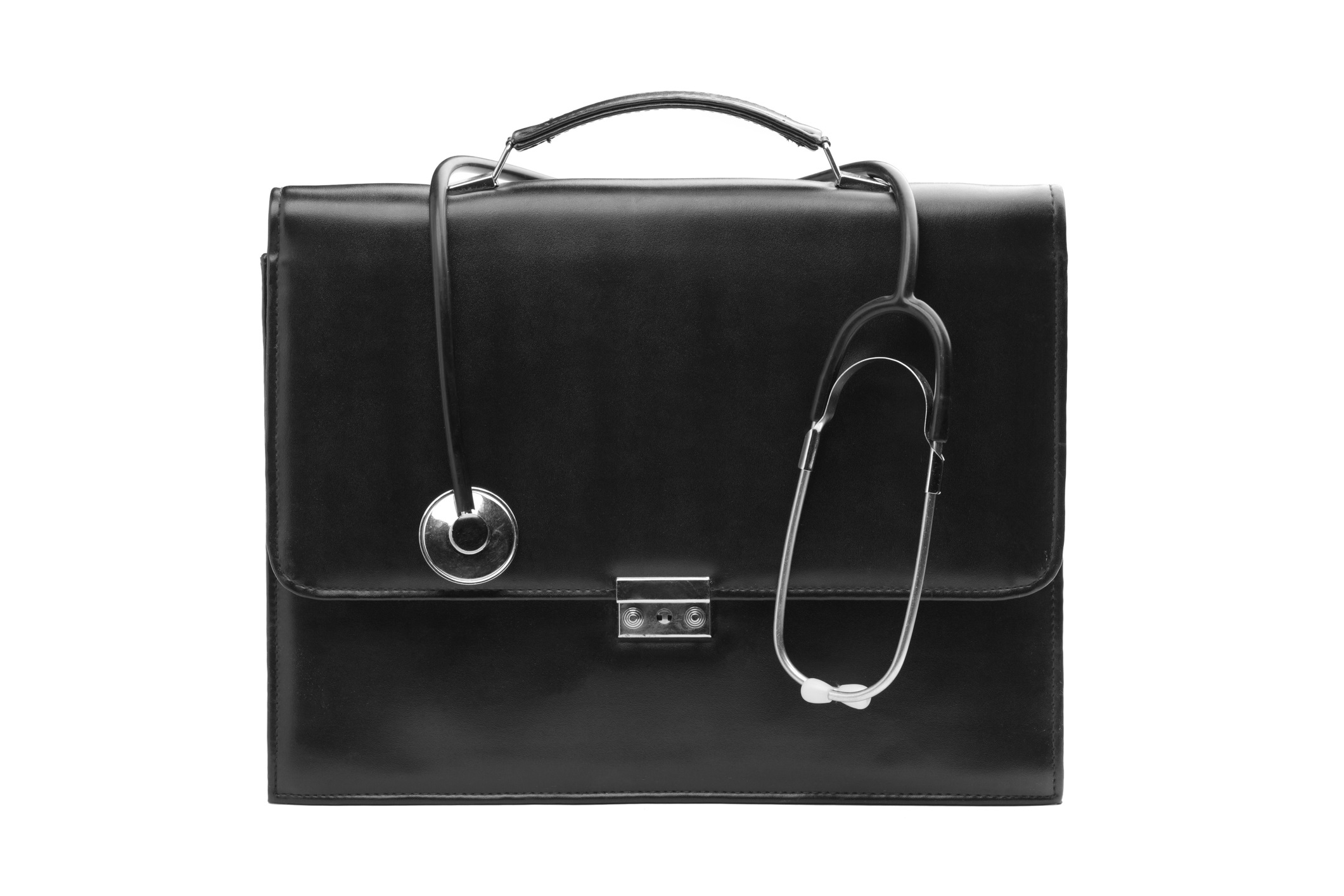Pneumocystis pneumonia in an HIV-negative patient
A patient with primary hyperparathyroidism, rheumatoid arthritis, and inclusion-body myositis presented with fatigue, nausea, and vomiting.
The patient
A 77-year-old woman with primary hyperparathyroidism, seropositive rheumatoid arthritis (in remission), inclusion-body myositis (treated with methotrexate and frequent intermittent courses of prednisone), chronic macrocytic anemia, and iron deficiency presented with fatigue, nausea, and vomiting after having her methotrexate dose increased approximately one month prior. She was found to have severe hypercalcemia, prerenal acute kidney injury, and acute-on-chronic anemia with a hemoglobin level of 7.1 g/dL (reference range, 13.5 to 17.0 g/dL). She was started on high-dose IV isotonic fluids, given a single dose of calcitonin, and admitted for further observation. Methotrexate was held.

The patient developed acute hypoxic respiratory failure and fever (38.5 °C) on admission day 1. Her leukocyte count was within normal limits. An electrocardiogram showed sinus tachycardia with left bundle branch block of indeterminate acuity. High-sensitivity troponin testing was negative. Arterial blood gas showed low PaO2 consistent with hypoxemia but was otherwise normal. NT-pro-brain natriuretic peptide levels were within normal limits. A transthoracic echocardiogram had findings consistent with hyperdynamic state without regional wall motion abnormalities or acute valvulopathy. A chest X-ray showed bilateral perihilar interstitial infiltrates, left lobar infiltrate, and trace left-sided pleural effusion. Chest CT showed widespread ground-glass opacities without evidence of acute pulmonary embolism. Blood cultures, induced sputum cultures, and Gram stain were unremarkable. Testing for SARS-CoV-2, influenza, respiratory syncytial virus, methicillin-resistant Staphylococcus aureus, Legionella, and Streptococcus pneumoniae was negative. Cefepime and azithromycin were started empirically for presumed community-acquired pneumonia and pseudomonal coverage given the patient's immunosuppressed status.
A serum assay returned positive for (1,3)-beta-D-glucan on day 3 and prompted fiberoptic bronchoscopy and bronchoalveolar lavage (BAL). Serologies and polymerase chain reaction (PCR) analyses for invasive fungal infection were negative. Pneumocystis jirovecii pneumonia (PCP) direct immunofluorescence and PCR assays both returned positive from BAL fluid samples. Silver staining of induced sputum samples did not identify cysts or trophic forms of P. jirovecii. The patient was started on first-line treatment for PCP (oral trimethoprim-sulfamethoxazole, two double-strength tablets, three times daily for 21 days) and continued taking azithromycin for coverage of atypical respiratory co-infection. She completed a seven-day course of macrolide therapy. She remained on her home prednisone dose (10 mg daily). Vital signs (most notably, oxygenation), complete blood count, and renal and liver function studies showed positive trends, with her supplemental oxygen requirement weaned to 1 L at time of hospital discharge.
The diagnosis
The diagnosis is Pneumocystis jirovecii pneumonia. Accumulating evidence suggests that PCP infection in non-HIV-infected immunocompromised patients is associated with more acute symptom onset (several hours to days), faster disease progression (within days), higher risk for respiratory failure, and higher mortality rates, underscoring the importance of early diagnosis and treatment.
Because P. jirovecii does not grow on culture media in vitro, PCP diagnosis relies on visualization of cysts or trophic forms on samples of respiratory material, with BAL fluid preferred over induced sputum due to its higher diagnostic yield. Immunofluorescence (either direct or indirect) for anticyst antibodies is superior to conventional staining, with sensitivities ranging from 85% to over 98%. However, the sensitivity of microscopy is lower in non-HIV-infected patients owing to their lower burden of fungal organisms. Given the variable sensitivity of microscopy, PCR testing and (1,3)-beta-D-glucan are also recommended as part of the diagnostic workup for suspected PCP infection.
Prognosis depends on many factors, including degree of hypoxia at presentation, age, and prior PCP infection. Mortality rates in non-HIV patients with PCP range from 30% to 65% compared to 10% to 20% for an initial episode of PCP in HIV-infected patients. Mortality is higher in HIV-negative patients with cancer than in those undergoing transplantation or those with connective tissue disease.
The most common and significant risk factor for PCP in non-HIV-infected patients is use of glucocorticoids combined with other immunosuppressive therapy. PCP has been increasingly reported in immunocompromised patients without HIV during the last several decades, attributed to the increasing number of at-risk patients receiving corticosteroids and other immunosuppressive medications.
Treatment regimens for PCP are defined by severity of infection. Trimethoprim-sulfamethoxazole is the preferred agent for treatment because of its clinical efficacy, low cost, and bioavailability in both IV and oral formulations. Patients with severe PCP infection (e.g., acute respiratory failure, hemodynamic instability, or need for ventilatory support) should be treated by IV due to the potential for decreased drug absorption.
Adjunctive treatment with corticosteroids provides the greatest benefit to HIV-positive patients with hypoxemia. No studies to date have demonstrated mortality benefit from adjunctive corticosteroid use in HIV-negative patients with PCP.
Pearls
- PCP infection in HIV-negative immunocompromised patients is characterized by more acute onset of symptoms, rapid disease progression, and higher risk for respiratory failure and death.
- Definitive diagnosis of PCP may not always be possible, especially in HIV-negative patients, and treatment with trimethoprim-sulfamethoxazole should not be withheld while diagnostic workup is pending.



